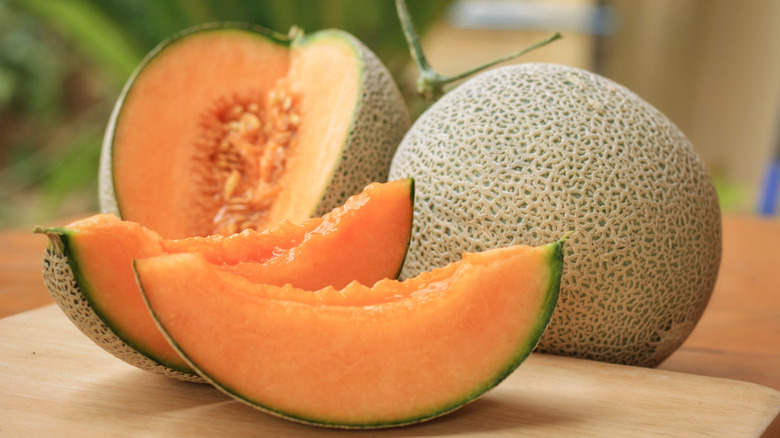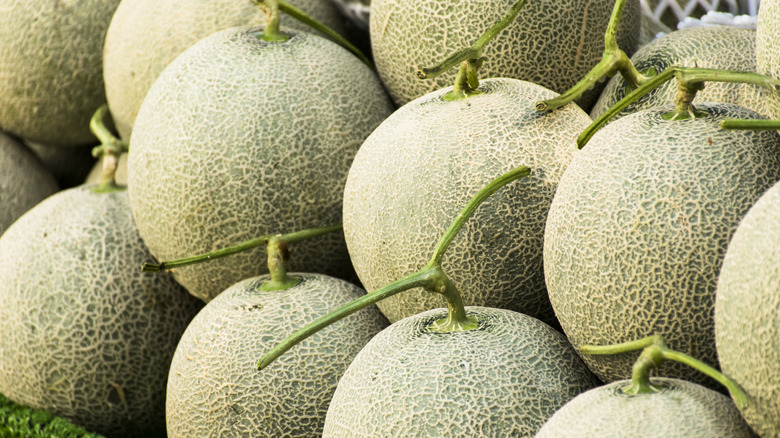How To Pick A Ripe Cantaloupe By Smelling It
Biting into a juicy, sweet cantaloupe is like taking a bite out of summer. According to Medical News Today, the delicious fruit also packs a nutritional wallop, especially considering it weighs in at only 60 calories per cup. The antioxidant powerhouse includes selenium, beta carotene, vitamin C, lutein, and choline. Its high water and fiber content helps maintain a healthy digestive track. It is also an excellent source of potassium, magnesium, and calcium, cantaloupes and contains beneficial electrolytes, which are important for hydration and muscle function (via Cedars-Sinai).
Healthline explains that while cantaloupes are available year-round, the warm weather fruit hits peak deliciousness in the summer. According to the website, the flesh of a ripe melon should be a yellow-orange color with no (or very little) green. However, with the flesh hidden under an undecipherable hard outer shell, sometimes figuring out if a cantaloupe is ripe feels like an exercise in futility. Michigan State University states that local cantaloupes picked during warm weather months are likely ripe when they arrive in stores. However, if you are picking a melon in the dead of winter, or one that was shipped long distances, it was likely picked ahead of its peak to withstand transport.
Use the sniff test to pick a ripe cantaloupe
Cantaloupes can last 14 to 18 days post-harvest, according to Truckload Shipping. Since they are perishable items, cantaloupes are transported in refrigerated trucks kept between 36 to 41 degrees F. Any colder and the fruit will degrade as soon as it returns to temperature. Colorado State University's Food Source Information explains that just harvested cantaloupes need their field heat (the difference in temperature between harvest and optimal storage, via Energypedia) removed rapidly in order to maintain the integrity of the fruit.
As long as they are picked at the right time, stored properly, and shipped quickly, the cantaloupes in your grocery store should be ready for consumption. However, there's usually a melon or two that isn't quite up to snuff. You can determine if a cantaloupe is ripe simply by smelling it, explains the Minnesota Horticulture Society. In order to tell if the melon is ready for your fruit salad, sniff the blossom end. This is the end opposite the stem, and often has a slight indentation, which should give slightly when pressed. Minnetonka Orchards describes the aroma of a ripe melon as sweet and slightly musky. ThriveCuisine states that the melon smell will be strong.
If your melon is not quite ready for prime time, leave it on the counter for a few days. To speed the up process, throw it in a paper bag with a banana or apple, both of which contain ethene, which causes ripening (via ThriveCuisine).

